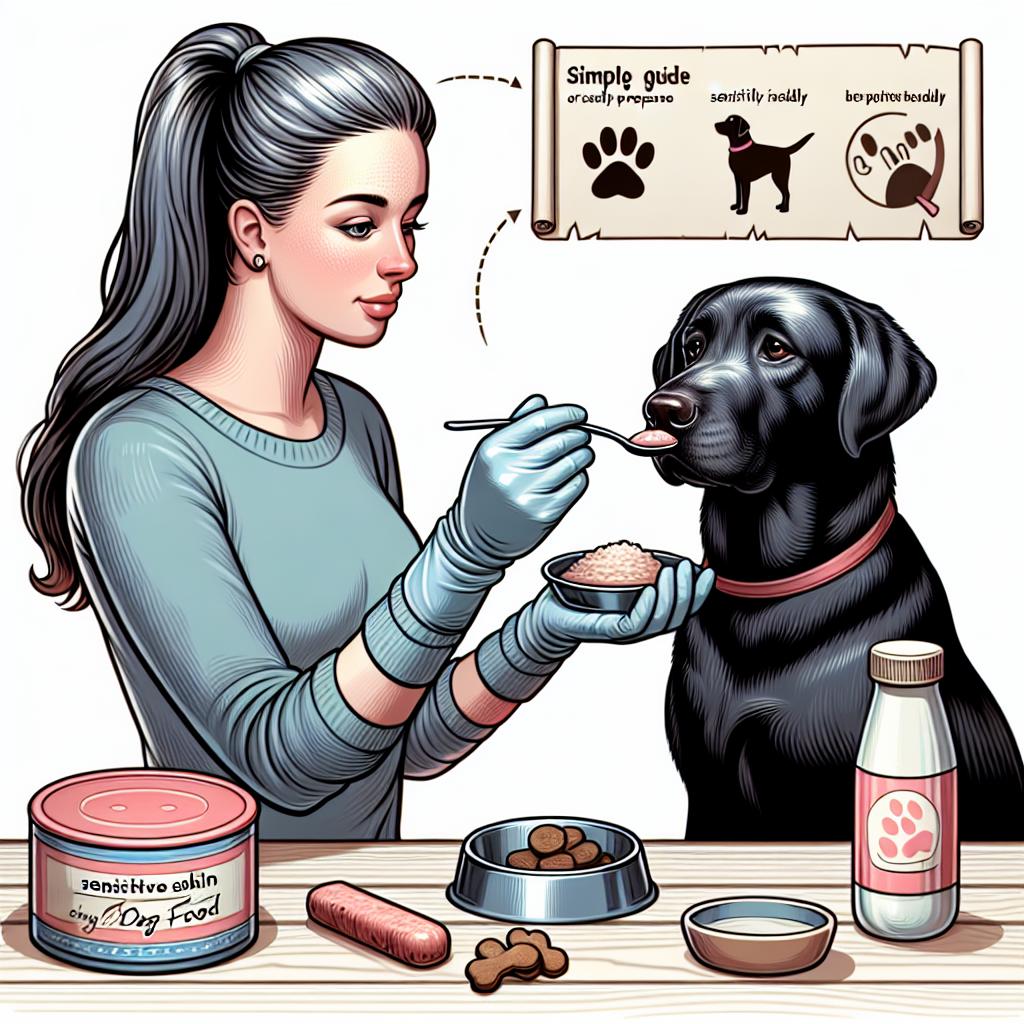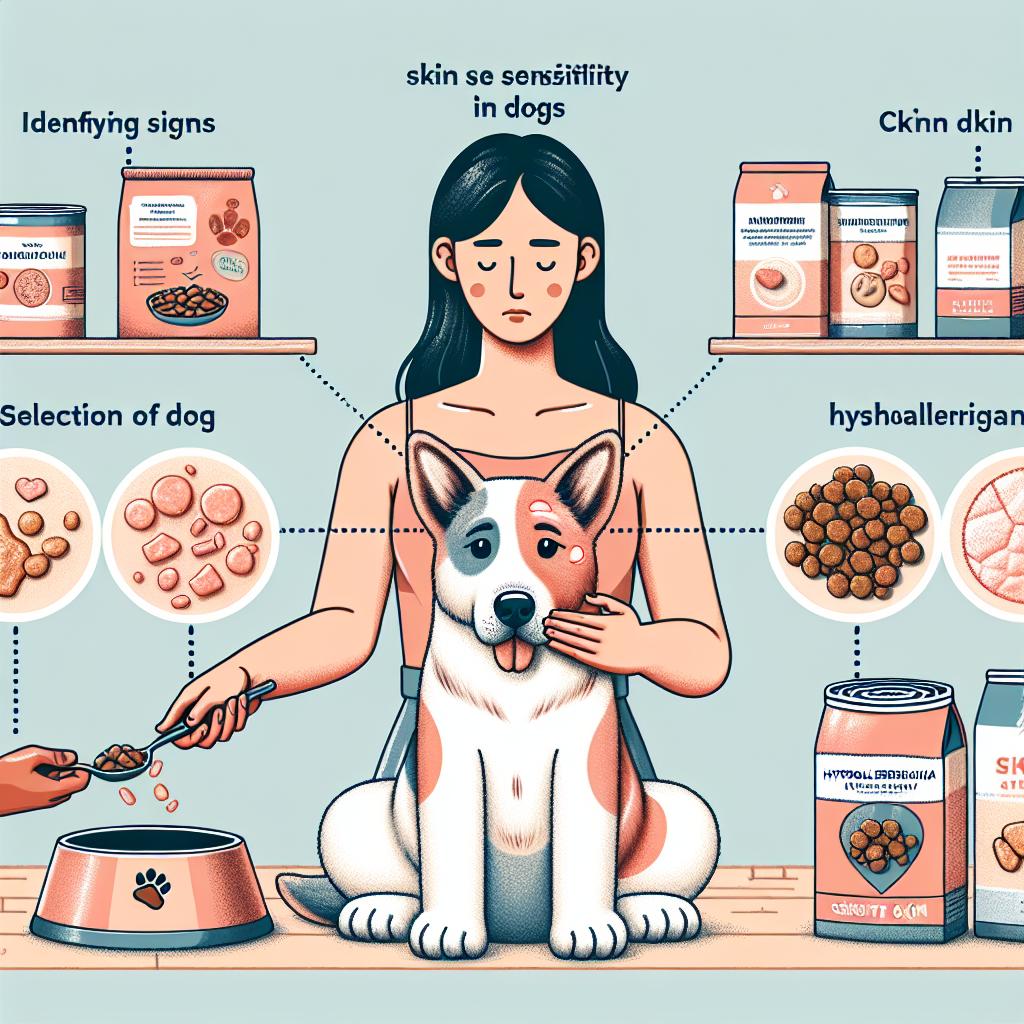When it comes to our furry companions, their health and happiness are paramount. For dogs with sensitive skin, the road to wellness can often be riddled with challenges. From itching and irritation to hair loss and discomfort, sensitive skin can put a damper on even the most vibrant of personalities. One essential aspect of nurturing a pup with delicate skin is understanding the impact of diet. Just as we carefully choose our own foods, so too must we consider the nutritional needs of our four-legged friends. In this article, we will explore effective strategies to feed dogs with sensitive skin, offering insight into the best ingredients to look for, what to avoid, and how proper nutrition can help maintain a glow of health in your beloved pet. Join us on this journey to discover how the right diet can soothe and support your dog’s unique skin needs, ensuring they feel as good on the outside as they do on the inside.
Understanding the Causes of Sensitive Skin in Dogs
Sensitive skin in dogs can be a perplexing issue for many pet owners, often leading to discomfort and frustration for both the animal and their humans. Various factors contribute to this condition, notably environmental irritants, which can include pollen, dust, mold, and harsh chemicals in cleaning products. Additionally, food allergies are a significant culprit; certain proteins or additives in their diet may trigger skin reactions. Lastly, genetic predisposition plays a crucial role, as some breeds are more susceptible to skin sensitivities than others, which means understanding breed-specific needs can be vital in managing their health.
Another factor to consider is hormonal imbalances, which can lead to inflammatory skin conditions. Dogs with underlying health problems, such as hypothyroidism or Cushing’s disease, may also exhibit sensitive skin issues. Lastly, age-related factors contribute, as older dogs may experience a natural decline in skin health and elasticity. To effectively address these skin concerns, it’s essential to analyze your dog’s lifestyle and environment meticulously. Regular vet check-ups and skin evaluations can aid in pinpointing the exact causes, ensuring that your furry friend remains healthy and comfortable.

Choosing the Right Ingredients for Sensitive Skin Diets
The journey to feeding a dog with sensitive skin begins with a careful selection of ingredients that prioritize their unique dietary needs. High-quality proteins like salmon, turkey, and lamb are excellent choices, as they are less likely to provoke allergies. Incorporating easily digestible carbohydrates such as sweet potatoes or brown rice can provide essential energy while minimizing the chance of skin irritation. Additionally, look for ingredients that are rich in omega-3 and omega-6 fatty acids, as these are known to promote healthy skin and a shiny coat. Always avoid common allergens such as wheat, corn, and soy, which could exacerbate sensitive skin issues.
Furthermore, consider adding natural supplements that can offer additional support. Ingredients like flaxseed oil and coconut oil can enhance skin health and reduce inflammation. When exploring commercial diets, it’s crucial to scrutinize the ingredient list for any fillers or artificial additives that may trigger sensitivities. Here’s a simple comparison of ideal ingredients:
| Ingredient Type | Examples | Benefits |
|---|---|---|
| Protein Sources | Salmon, Turkey, Lamb | High digestibility, low allergenic potential |
| Carbohydrates | Sweet Potatoes, Brown Rice | Energy-rich, hypoallergenic |
| Fats | Flaxseed Oil, Coconut Oil | Supports skin health, reduces inflammation |

Homemade Meal Options for Allergic Reactions
When preparing meals for dogs with sensitive skin, it’s essential to cater to their specific dietary needs while avoiding common allergens. Homemade meals allow you to control the ingredients and tailor their diet to promote skin health. Consider incorporating the following allergy-friendly ingredients into your dog’s meals:
- Lean meats like turkey, chicken, or lamb
- Fish such as salmon or sardines, rich in omega-3 fatty acids
- Vegetables like carrots, sweet potatoes, and green beans for added fiber
- Carbohydrates including brown rice or quinoa that are easy on the stomach
- Healthy fats from sources like olive oil or coconut oil to support skin health
To further customize your dog’s meals, consider creating a weekly meal plan that includes a balanced mix of these ingredients. Explore the following simple recipe ideas that can help soothe sensitive skin:
| Recipe | Main Ingredients | Benefits |
|---|---|---|
| Turkey & Sweet Potato Stew | Turkey, sweet potatoes, peas, carrots | Protein-rich, anti-inflammatory |
| Salmon & Brown Rice Bowl | Salmon, brown rice, green beans | Omega-3s, promotes healthy coat |
| Lamb & Quinoa Mix | Lamb, quinoa, spinach | Easy digestible, packed with nutrients |

Transitioning to New Foods Safely and Effectively
When introducing new foods to dogs with sensitive skin, it’s crucial to proceed with care and attention. Start by selecting high-quality, hypoallergenic ingredients that are less likely to provoke skin reactions. Make the transition gradual; begin by mixing a small amount of the new food into their current diet. This method helps your dog’s digestive system adapt without overwhelming it. Monitor their response closely during this period, checking for any signs of discomfort, digestive upset, or skin irritation. A good rule of thumb is to follow the 70/30 ratio in the first few days: 70% old food and 30% new food.
Once you’ve established tolerance for the new diet, you can gradually increase the proportion of the new food while decreasing the old. In addition, consider keeping a simple log of your dog’s reactions and any changes in their skin condition. This can help you identify potential allergens or sensitivities. Here’s a brief overview of foods that are generally safe and known for their benefits:
| Food | Benefit |
|---|---|
| Salmon | Rich in omega-3 fatty acids, promotes skin health |
| Sweet Potatoes | Anti-inflammatory properties, high fiber |
| Carrots | Low-calorie, high in vitamins |
| Quinoa | Excellent protein source, gluten-free |
Q&A
Q&A: How to Feed Dogs with Sensitive Skin
Q1: What are the common signs that my dog has sensitive skin?
A: Dogs with sensitive skin may exhibit redness, itching, inflammation, or frequent scratching. You might also notice dry patches, irritation, or excessive licking, especially in areas like the belly, paws, and ears. Observing your dog’s behavior during grooming or play can provide further clues about their skin health.
Q2: How can diet affect my dog’s skin sensitivity?
A: A dog’s diet plays a crucial role in their skin health. Many skin issues can stem from food allergies or intolerances to certain ingredients. Key culprits often include common proteins like beef, chicken, or grains. A well-balanced diet, rich in omega fatty acids, vitamins, and minerals, can support skin health and potentially alleviate sensitivity.
Q3: What ingredients should I avoid in my dog’s food?
A: To minimize skin irritation, it’s wise to steer clear of common allergens such as wheat, corn, soy, artificial preservatives, dyes, and fillers. Additionally, be cautious with certain proteins that seem to trigger your dog’s sensitivity. Always check with your veterinarian before making significant dietary changes.
Q4: What type of dog food is best for dogs with sensitive skin?
A: Opt for high-quality, limited-ingredient diets that feature novel proteins (like duck, rabbit, or fish) that your dog hasn’t eaten before. Hypoallergenic formulas can also be beneficial, as they’re designed to minimize the risk of allergic reactions. Foods rich in omega-3 and omega-6 fatty acids can also support skin health and reduce inflammation.
Q5: Should I consider homemade diets for my dog?
A: Homemade diets can be a viable option for dogs with sensitive skin, as they allow you to control the ingredients. However, it’s crucial to ensure these diets are well-balanced by consulting your veterinarian or a pet nutritionist. They can help you design a meal plan that meets your dog’s nutritional needs while avoiding potential allergens.
Q6: Are there specific supplements I should consider for skin health?
A: Yes, supplements such as fish oil (rich in omega-3 fatty acids), flaxseed oil, and probiotics can support skin health and enhance overall well-being. Always discuss with your veterinarian before introducing any new supplements to ensure they complement your dog’s diet effectively.
Q7: How often should I feed my dog if they have sensitive skin?
A: Generally, feeding your dog twice a day is recommended; however, this may vary based on their age, weight, and activity level. Consistent feeding schedules can help maintain stable energy levels and digestion, which can indirectly benefit skin health.
Q8: What steps can I take if my dog’s skin doesn’t improve with dietary changes?
A: If there’s no noticeable improvement after dietary adjustments, it’s essential to consult your veterinarian. They may suggest further testing to identify specific allergens or underlying issues. In some cases, referrals to a veterinary dermatologist might be necessary for a comprehensive evaluation.
Q9: Can grooming routines impact my dog’s skin condition?
A: Absolutely! Regular grooming helps remove dead hair, dander, and dirt, which can contribute to skin irritation. Use gentle, hypoallergenic shampoos that are suited for sensitive skin, and consider incorporating moisturizing products as needed to help soothe your dog’s skin.
Q10: Is there anything else I can do to support my dog’s skin health?
A: Beyond dietary choices, maintaining a stress-free environment is vital as stress can exacerbate skin issues. Regular vet check-ups, a proper grooming routine, and a healthy lifestyle also contribute significantly to your dog’s overall skin health. Remember, a happy dog is often a healthy dog!
Concluding Remarks
caring for a dog with sensitive skin requires a delicate balance of attention and knowledge. By understanding their specific needs and preferences, you can create a tailored diet that promotes both their health and comfort. Always remember to consult with a veterinarian before making significant changes to your furry friend’s meal plan, as expert guidance can pave the way for a happier, healthier life. With some patience and experimentation, you’ll uncover the right routine and ingredients that bring out the best in your dog’s coat and overall well-being. Every wag of their tail will be a testament to your dedication—and together, you’ll turn the page on skin sensitivities, embarking on a journey of vibrant health and playful days ahead. Happy feeding!

